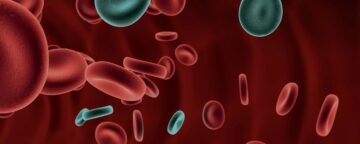Alejandra Manjarrez in The Scientist:
 Hematopoietic stem cells give rise to all blood cells in the body. Most of the time they are not dividing. Rather, they serve as a reserve for the times when the body needs rapid blood formation. “One of the reasons why we have this kind of cellular Swiss bank account [is to protect] the cellular integrity,” said Britta Will, a stem cell biologist at the Albert Einstein College of Medicine. Each cell division may harm the cells’ DNA and other macromolecules, so the very demanding task of daily blood cell production is instead accomplished by more committed descendants, namely progenitor blood cells that can differentiate into specific cell types.
Hematopoietic stem cells give rise to all blood cells in the body. Most of the time they are not dividing. Rather, they serve as a reserve for the times when the body needs rapid blood formation. “One of the reasons why we have this kind of cellular Swiss bank account [is to protect] the cellular integrity,” said Britta Will, a stem cell biologist at the Albert Einstein College of Medicine. Each cell division may harm the cells’ DNA and other macromolecules, so the very demanding task of daily blood cell production is instead accomplished by more committed descendants, namely progenitor blood cells that can differentiate into specific cell types.
As individuals age, this cellular bank is not as readily available as in youth; the capacity of blood stem cells to self-renew declines. This reduced ability to replenish diverse blood cell types may result in impaired immune surveillance and contribute to the development of aging-associated cancers or other degenerative diseases. In a study published in Cell Stem Cell, Will and her colleagues showed that young mouse hematopoietic stem cells tightly regulate iron homeostasis to keep intracellular iron levels low, a capacity which may be lost during aging.1 Furthermore, when researchers subjected them to additional iron restriction by using iron chelators, these cells activated a molecular response that is linked to their regenerative capacity. A treatment for intermittently removing excess iron in mice over the course of 13 months prevented the age-associated decline in these cells’ function.
More here.
